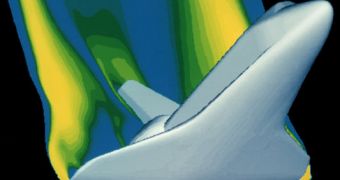Experts in the field believe that the future of gas detectors lies within a new generation of optical sensors, which are apparently able to detect trace amounts of harmful chemicals in the air with ease. The new systems, their designers say, could be employed in the near future in a wide array of applications, ranging from fighting terrorism and homeland security to uses in the chemical industry, or for testing the purity of advanced materials. The detectors were developed as part of the cross-disciplinary, EU-funded project NEMIS, ScienceDaily reports.
Until the 20th century, there were few means of detecting dangerous build-ups of toxic gases, such as carbon dioxide, and biological detectors, such as canaries, were the latest fashion in such an investigation. Admittedly, the birds did save the lives of thousands of miners working underground, but their abilities were limited to say the least. The birds were replaced by electro-chemical sensors, which remained the norm for many years. In spite of progresses in their design, they are still plagued by numerous flaws, one of the most important being that they take a long time to yield a result.
The new NEMIS detectors are based on the most recent advancements in laser technology and photonics, which enable them to be robust, long-lasting, and lightning-fast at the same time. The photonic sensing systems are driven by what scientists call vertical-cavity, surface-emitting semiconductor laser diodes (VCSEL). “The advantages of using VCSELs rather than conventional lasers, apart from cost-efficiency, are that you can tune the wavelength more broadly. Usually a laser can only be tuned over less than a nanometer by changing the electrical current, but a VCSEL has the ability to tune over more than five nanometers,” project manager Alexander Bachmann explains.
This allows for the entire system to be more flexible, and also to produce sealed, self-contained sensors. In pilot studies, the researchers looked for traces of carbon monoxide gas in air samples. By tuning the wavelength of the laser, they were able to get a hit almost instantly from the detectors. “Perhaps the biggest challenge for us here was the wavelength. No laser able to do what we wanted done at the wavelength range we had to work at – 2 to 3.5 µm (micrometers) – had been developed. So one of the main achievements of the project has been to develop lasers that are suitable for optical gas sensing,” the expert concludes.

 14 DAY TRIAL //
14 DAY TRIAL //